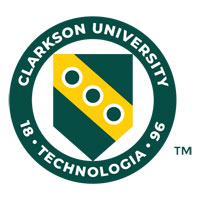Satisfaction-Priorities Surveys
The suite of RNL Satisfaction-Priorities Surveys (SPS) assess both the level of importance and the level of satisfaction that students assign to a variety of statements about their experience. This combination of data allows an institution to view satisfaction within the context of what truly matters to students.
The survey instruments are comprehensive, capturing the student experience inside and outside of the classroom, including items in such areas as:
- Instructional effectiveness
- Academic advising
- Registration effectiveness
- Campus climate
- Recruitment and financial aid
Dive into responses by demographics and satisfaction indicators
In addition, the surveys capture summary satisfaction indicators (which have been linked to individual student retention and institutional graduation rates) as well as standard demographic items which allow for the ability to slice the results by demographic subpopulations.
Add your own customized questions
Each survey version allows for customization with the addition of campus-defined items rated for importance and satisfaction, demographic indicators, and a drop-down list for the majors/programs offered at the institution.
Survey Versions
Select the survey version(s) that is best for the populations you serve.
The ASPS is appropriate for surveying adult students 25 years of age and older at:
- Undergraduate programs at four-year institutions
- Graduate programs
- Evening or weekend programs
Select the file you wish to preview:
The PSOL is designed specifically for online students in either graduate or undergraduate programs at four-year and two-year institutions.
The SSI is appropriate for traditional populations at four-year public and private institutions. You can select either the Form A 70+ item version (most widely used) or the shorter 40+ item Form B version. For an easy comparison of the two surveys review this document.
SSI 4-Year Form A: 70+ items
- Online Sample
- Survey Items and Items Comprising Scales PDF
- Current National Comparison Group (Public / Private)
SSI 4-Year Form B: 40+ items
- Online Sample
- Survey Items and Items Comprising Scales PDF
- Current National Comparison Group (Public / Private)
The SSI is appropriate for students at Community, Junior and Technical Colleges. You can select either the Form A 70+ item version (most widely used) or the shorter 40+ item Form B version. For an easy comparison of the two surveys review this document.
SSI 2-Year Form A: 70+ items
SSI 2-Year Form B: 40+ items
The SSI is appropriate for students at two-year Career and Private Schools. You can select either the Form A 70+ item version or the shorter 40+ item Form B version. For an easy comparison of the two surveys review this document.
SSI Career and Private Form A: 70+ items
SSI Career and Private Form B: 40+ items
The IPS captures the perceptions of the student experience through the eyes of faculty, staff and administrators. The IPS survey version selected should align with the SSI version used.
IPS 4-Year Form A
IPS 2-Year Form A
To assess campus employee satisfaction learn about the College Employee Satisfaction Survey.

Report Deliverables
The results provided clearly identify institutional strengths (items with high importance and high satisfaction) as well as institutional challenges (items with high importance and low satisfaction).
External benchmarking is included at the national and regional level (for the SSI) highlighting where their students may be more or less satisfied than students nationally.
With administrations over multiple years, institutions will see year to year comparisons which reflect where satisfaction levels have shifted significantly over time, allowing colleges to see how their initiatives have improved satisfaction levels.
In addition to providing actionable data for the entire populations, institutions can slice the data on all of the captured demographic variables to identify where there may be areas of greater concern by class level, race/ethnicity, enrollment status, major/programs, etc. Reviewing the data by demographic subpopulations can provide a clearer picture for initiatives to support student success efforts.
Also see:
- Particular data elements of the results are going to be relevant for specific departments on campus. Learn more here.
- The SPS results support multiple efforts on campus, including student success, accreditation, strategic planning and recruitment.
What’s Included
Compare your institution’s survey results to the national comparison group or in some cases a regional comparison group. Your institutional strengths (items with high importance and high satisfaction) as well as your specific challenges (high importance and low satisfaction) are clearly identified.
The Executive Summary section of this report provides you with a view of the most critical information from your results. In a few quick steps, you can take screenshots and have high-level results ready to share.
Compare your most recent survey administration with a previous administration so you can see where satisfaction levels have shifted significantly over time.
The emphasis in reviewing the Year-to-Year Reports should be on the difference column. This allows you to identify where there have been significant improvements in satisfaction over time, as well as to identify where satisfaction levels may be declining in critical areas.
- Versus Report: Compare two demographic subpopulations to each other, to see where one group may be significantly more or less satisfied than another group (ex: Full-time vs. Part-time). Strengths and Challenges are defined for each demographic variable. This report format is the best location where majors/programs and campus-defined demographic items can be isolated for review.
- Single Group Report: Allows you to isolate the data by a specific demographic subpopulation and compare it with the corresponding demographic subpopulation on the national level. (ex: Hispanic students at your institution vs. Hispanic students nationally).
- Comparison Report: Allows you to isolate the data by specific demographic subpopulations to provide you with a better understanding of the perceptions across subsets (ex: Freshman, Sophomore, Junior, Senior).
The raw data are provided as a way to conduct your own in-depth analysis of the results. However, the interactive dashboards offer the calculated analysis most institutions need.
The raw data includes all of the individual responses to each survey item as well as all of the demographic responses. It is the one place that provides the individual record identifier (i.e. student ID, or unique passcode from the online administration), which can be used to append the file with additional information.
The survey provides one space for students to respond to the statement: “Please enter any comments you would like to share with this institution.”
The open-ended comments file delivers the text of the responses verbatim. These provide a starting place to better understand the students’ perceptions of their experience and may point you in the right direction for next steps.


